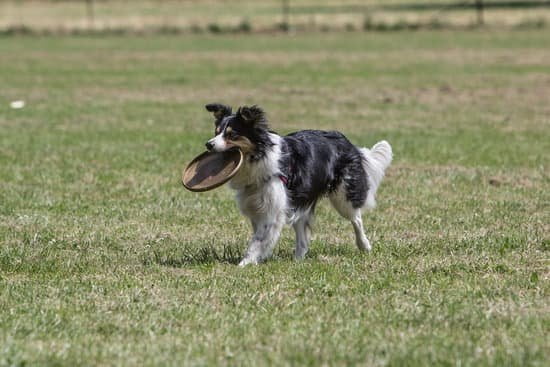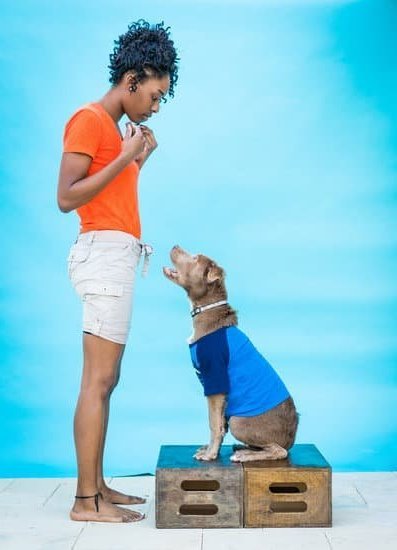Dogs are known for their affectionate nature, and licking is a common way for them to show love and appreciation. However, excessive licking can become a problem that needs to be addressed. In this article, we will explore how to train your dog to stop licking. Understanding the behavior of dog licking is crucial in order to effectively address this issue.
Excessive licking in dogs can be attributed to various factors. It could be a result of anxiety, boredom, stress, or even a medical condition. Regardless of the cause, it is important to recognize the potential health risks associated with excessive licking. Dogs that lick excessively can develop skin irritations and infections, which may require medical intervention. Moreover, constant licking can also cause discomfort and irritation for the dog itself.
Addressing excessive licking is essential not only for your dog’s physical well-being but also for their overall happiness and quality of life. By implementing consistent training techniques and creating a structured routine, you can help your furry friend overcome this behavior and redirect their attention towards more appropriate activities.
In the following sections, we will delve into identifying the underlying cause of excessive licking in dogs and setting up a structured training routine. We will also explore techniques on how to distract your dog from excessive licking as well as how to teach them to stop on command through behavioral modification techniques.
Additionally, we will discuss environmental modifications that can create a licking-free space for your dog and highlight the importance of addressing any underlying medical issues with professional guidance when needed.
By understanding the behavior behind excessive licking and implementing effective training methods, you can ensure that your beloved companion leads not only a healthy life but also an emotionally balanced one. So let’s dive into this comprehensive guide on how to train your dog to stop licking.
Identifying the underlying cause of excessive licking in dogs
Dogs engage in licking behavior for various reasons, and it is important to identify the underlying cause of excessive licking in order to effectively address it. Understanding the motivations behind this behavior can help dog owners determine whether the licking is normal or problematic.
There are common reasons why dogs may lick excessively, such as boredom, anxiety, allergies, or even medical conditions. Differentiating between normal and problematic licking can be done by observing and analyzing patterns of behavior. For example, if a dog licks themselves occasionally to groom or clean a wound, that would be considered normal. However, if they lick obsessively to the point of causing skin irritation or wounds, that would be classified as problematic.
To identify the cause of excessive licking in dogs, it is important to observe their environment and daily routines closely. Keeping a diary or record of when the excessive licking occurs can provide valuable insights. Factors such as certain times of day, specific triggers (e.g., doorbell ringing), or interactions with certain objects or people should be noted.
Once patterns have been identified, it is possible to address potential causes. For example, if a dog licks excessively due to boredom or lack of mental stimulation, introducing interactive toys and engaging activities can redirect their attention and minimize the incentive for licking. If allergies are suspected as the underlying cause, consulting a veterinarian for proper diagnosis and treatment options is crucial.
By identifying the underlying cause of excessive licking in dogs and addressing it appropriately, owners can help improve their pet’s well-being and overall quality of life.
Consistency is key
Consistency is key when it comes to training your dog to stop licking. By establishing a structured training routine, you can effectively address this behavior and help your dog break the habit.
Establishing a consistent daily routine
One of the first steps in setting up a structured training routine is establishing a consistent daily schedule for your dog. Dogs thrive on structure and predictability, so having a set routine can help them understand what is expected of them. This includes feeding times, exercise sessions, and designated training periods. By providing your dog with regularity in their daily activities, they will be more receptive to learning and breaking the habit of excessive licking.
The role of positive reinforcement in training
Positive reinforcement is a crucial element in any dog training program, including addressing excessive licking behavior. Whenever your dog refrains from licking or redirects their attention away from licking, reward them immediately with praise, treats, or both. This positive association will reinforce the desired behavior and motivate your dog to continue behaving in that way.
It’s important to note that punishment should never be used as part of the training process. Instead, focus on rewarding and reinforcing the behaviors you want to encourage.
Importance of patience and persistence
Changing ingrained habits takes time and patience. It’s essential to remember that results won’t happen overnight – consistency is key. Stick to your structured training routine even if there are setbacks along the way. Be patient with your dog as they learn new behaviors and always remain persistent in reinforcing those behaviors consistently.
It’s important not to get frustrated or discouraged if progress seems slow at times. Every small step forward is an achievement worth celebrating, as it brings you closer to achieving your goal of stopping excessive licking behavior in your dog.
By establishing a consistent daily routine, using positive reinforcement, and practicing patience and persistence, you can set yourself up for success in training your dog to stop licking. With time and dedication, you will see progress and ultimately help your furry friend develop healthier behaviors.
Redirecting attention
Excessive licking can be a challenging behavior to tackle in dogs, but redirecting their attention is an effective approach to curb this habit. By introducing interactive toys and providing mental stimulation, you can distract your dog from excessive licking and engage them in alternative activities. Here are some strategies to help redirect your dog’s attention:
- Introducing interactive toys: Interactive toys are a great way to keep your dog mentally stimulated and focused on something other than licking. Puzzle toys, treat-dispensing toys, and chew toys can provide hours of entertainment and satisfy their natural urge to lick and chew. Fill these toys with treats or peanut butter to keep your dog engaged while redirecting their attention away from excessive licking.
- Finding alternative activities: Engaging your dog in other activities that require physical or mental exertion can also divert their attention from licking. Take them for regular walks or play active games like fetch or tug-of-war. Provide them with appropriate outlets for their energy through obedience training sessions or agility exercises.
- Creating a positive association: To ensure successful distraction, it’s important to create a positive association between the new distractions and your dog’s experience. For example, when introducing interactive toys or engaging in alternative activities, reward your dog with praise, treats, or playtime when they focus on these distractions instead of excessive licking. This positive reinforcement will encourage them to choose these alternatives over licking.
By implementing these strategies consistently and providing a variety of engaging activities for your dog, you can effectively redirect their attention away from excessive licking. Remember to be patient and persistent in the training process, as it may take some time for your dog to break the habit completely. Consistency is key.
Behavioral modification techniques
Training your dog to stop licking on command can be an effective way to address excessive licking behavior. By teaching your dog a specific command, such as “leave it” or “no lick,” you can communicate your expectations and redirect their attention away from licking. This section will provide a step-by-step guide to training your dog to respond to the command and offer tips for reinforcing the desired behavior.
To begin training your dog to stop licking on command, start by using a verbal cue such as “leave it” or “no lick.” Choose a cue that is easy for you to remember and use consistently. Whenever you catch your dog starting to lick excessively, calmly say the cue phrase while simultaneously offering an alternative behavior, such as sitting or lying down.
As soon as your dog stops licking and engages in the alternative behavior, reward them with praise and a treat. Be sure to immediately follow up with positive reinforcement so that they understand they are being rewarded for stopping the licking behavior. Consistency is key during this process, so be sure to repeat this training exercise regularly throughout the day.
As your dog becomes more familiar with the command and consistently responds by ceasing their licking behavior, you can gradually phase out the treat rewards. Start by reducing the frequency of treats given after each successful response until eventually, verbal praise alone is sufficient. However, it is important to continue offering verbal praise consistently as a form of positive reinforcement.
Remember that patience and persistence are crucial when training your dog to stop excessive licking. It may take some time for them to fully understand and respond reliably to the command, but with consistent training practice, they will eventually learn what is expected of them. Reward-based training methods are most effective in shaping desirable behaviors in dogs while maintaining a happy and healthy relationship between you and your furry companion.
Environmental modifications
Identifying triggers that lead to excessive licking
One of the crucial steps in stopping your dog from excessive licking is identifying the triggers that contribute to this behavior. It is essential to observe your dog closely and try to identify what prompts them to engage in excessive licking. Some common triggers include stress, anxiety, boredom, allergies, skin irritations, or even certain scents or tastes. By pinpointing these triggers, you can take appropriate measures to create a licking-free environment for your furry friend.
Strategies for removing or minimizing these triggers
Once you have identified the triggers, it is important to take action to remove or minimize their presence in your dog’s environment. For example, if stress or anxiety contributes to your dog’s excessive licking, consider creating a calm and soothing atmosphere at home. Provide a designated relaxation area with comfy bedding and toys that promote mental stimulation and relaxation. Additionally, consider using calming aids such as pheromone diffusers or natural remedies recommended by your veterinarian.
If allergies or skin irritations are causing your dog’s licking behavior, it may be necessary to make dietary changes or explore different grooming products that are hypoallergenic and gentle on their skin. Regularly clean your dog’s bedding and living areas to eliminate potential allergens. Keep in mind that each dog is unique, so consulting with a veterinarian is crucial in determining the best strategies specific to your pet’s needs.
Using pet-safe deterrents to discourage licking
In some cases, using pet-safe deterrents can be an effective strategy in discouraging excessive licking behaviors. There are various bitter-tasting sprays available on the market that can be applied directly onto surfaces or objects that your dog tends to lick excessively.
These sprays have unappealing tastes that discourage dogs from continuing their licking behavior. However, it is important to choose products specifically designed for dogs and consult with your veterinarian before using any deterrents to ensure their safety and effectiveness for your pet.
By implementing these environmental modifications, you can create a licking-free environment that supports your dog’s training progress. Remember, consistency is key in achieving lasting behavior change, so make sure to be patient and persistent throughout the process. With time and effort, you can help your dog overcome excessive licking and promote their overall well-being.
Addressing any underlying medical issues
One crucial aspect of training a dog to stop licking excessively is addressing any underlying medical issues that may be contributing to this behavior. It is essential to consult with a veterinarian to rule out any health conditions that could be causing or exacerbating the excessive licking. By identifying and treating these medical conditions, you can effectively address the root cause of the problem and provide your dog with the necessary care.
When consulting with a veterinarian, they will conduct a thorough examination of your dog and may recommend additional tests or screenings to pinpoint any potential medical issues. Some common health conditions that can lead to excessive licking in dogs include allergies, skin infections, parasites, or gastrointestinal problems. By determining if any of these underlying conditions exist, appropriate treatment plans can be implemented.
Treating these medical conditions can involve various approaches such as medication, dietary changes, allergy management, or skin treatments. Following the recommended treatment plan diligently is crucial in addressing the underlying causes of excessive licking and ensuring your dog’s well-being. Additionally, regular check-ups with your veterinarian and preventive care are important for maintaining your dog’s overall health and minimizing the risk of developing future medical issues that may contribute to excessive licking.
Seek professional help if needed
If you have tried the previous techniques and your dog’s excessive licking behavior persists, it may be time to seek professional help. It is important to know when to enlist the assistance of a professional dog trainer or behaviorist who can provide specialized expertise in addressing this issue.
One of the benefits of seeking professional help is that they have extensive experience working with different types of dogs and behaviors. They will be able to assess your dog’s specific situation and develop a tailored training plan to target the underlying cause of their excessive licking. Professional trainers and behaviorists can often offer insights and solutions that you may not have considered on your own.
When searching for a professional, it is crucial to find someone reputable and qualified. Look for trainers or behaviorists who specialize in canine behavior modification and have a good track record with positive outcomes. You can ask for recommendations from your veterinarian, friends or family members who have worked with professionals in the past, or do research online to find reviews and testimonials.
In addition to their expertise, another advantage of seeking professional help is that they can provide ongoing support as you work through the training process. They will guide you through each step, offer feedback on your progress, and make adjustments to the training plan as needed. This support system can give you peace of mind knowing that you have someone knowledgeable by your side throughout the journey.
Remember, each dog is unique, and what works for one may not work for another. By seeking professional assistance, you are increasing your chances of success in addressing your dog’s excessive licking behavior effectively. With their guidance, you will be better equipped to navigate this challenging issue, ultimately improving both yours and your dog’s quality of life.
Conclusion
Training your dog to stop licking is an essential part of their overall well-being. Excessive licking can lead to potential health risks and should be addressed in a structured and consistent manner. By identifying the underlying causes, setting up a training routine, redirecting attention, using behavioral modification techniques, making environmental modifications, addressing any medical issues, and seeking professional help if needed, you can successfully train your dog to stop excessive licking.
As you work through the training process, it is important to reflect on the progress achieved. Celebrate each milestone and improvement your dog makes in their behavior. Recognize that changing this habit takes time and effort for both you and your furry friend. By maintaining ongoing reinforcement and consistency in your training methods, you can ensure that the progress made is maintained over time.
However, it’s not just about stopping the licking behavior. It’s equally important to focus on your dog’s overall happiness and health. Pay attention to their needs for mental stimulation and physical exercise. Provide interactive toys or engage them in alternative activities that distract them from licking. Creating a positive association with new distractions will further reinforce good behavior.
Don’t forget the importance of regular veterinary check-ups and preventive care. Sometimes excessive licking could be a sign of an underlying medical condition. Consult with your veterinarian to rule out any health issues that might be contributing to the behavior. Treating these conditions will not only help address the licking problem but also improve your dog’s overall well-being.
In some cases, seeking professional help from a dog trainer or behaviorist may be necessary. These professionals have specialized knowledge and techniques that can help address more complex issues related to excessive licking. They can provide guidance tailored specifically to your dog’s needs and ensure that they receive the best care possible.
By following these steps and staying committed to the process, you can train your dog to stop excessive licking while maintaining their happiness and overall health. Remember that patience, persistence, and consistency are key. Your dog’s progress is worth celebrating, and the effort you put into their training will benefit both of you in the long run.
Frequently Asked Questions
How do I stop my dog from excessive licking?
Excessive licking in dogs can be a common issue and it’s important to address it to ensure the well-being of your pet. To stop your dog from excessive licking, you first need to identify the underlying cause. Licking can often be a result of anxiety, allergies, pain, boredom, or even just a learned behavior. Once you have identified the cause, you can address it accordingly.
For example, if allergies are causing the licking, a visit to the vet and appropriate medication may be necessary. If it’s due to boredom or anxiety, providing mental stimulation through interactive toys or engaging your dog in regular exercise can help redirect their focus away from licking. In some cases, using deterrents like bitter-tasting sprays on areas they frequently lick can discourage them from continuing the behavior.
Can dogs be trained not to lick?
Yes, dogs can be trained not to lick. Training your dog not to lick involves teaching them an alternative behavior and reinforcing positive behaviors while discouraging unwanted ones. Start by training them simple commands like “sit” or “stay” so they have basic obedience skills and understand when they should refrain from licking.
It’s essential to reward them with treats or praise when they follow your commands correctly. Additionally, redirect their attention away from licking by offering a toy or engaging in other activities that keep their mouth occupied. Consistency is key during this process, so ensure all family members are on the same page and rewarding desired behaviors while consistently discouraging excessive licking.
Why does my dog lick so so much?
There could be various reasons why your dog licks excessively. One common reason is that dogs use licking as a way of communicating with their surroundings and expressing emotions such as affection or submission. Licking can also serve as a tool for exploration since dogs have numerous sensory receptors in their tongues that allow them to gather information about objects or surfaces they come into contact with.
However, excessive licking may indicate an underlying issue such as anxiety, allergies (such as food or environmental allergies), skin irritations, gastrointestinal problems, or even boredom. It is important to observe your dog’s behavior closely and consult with a veterinarian if you notice persistent and excessive licking to rule out any medical conditions that may require treatment.

Welcome to the blog! I am a professional dog trainer and have been working with dogs for many years. In this blog, I will be discussing various topics related to dog training, including tips, tricks, and advice. I hope you find this information helpful and informative. Thanks for reading!





